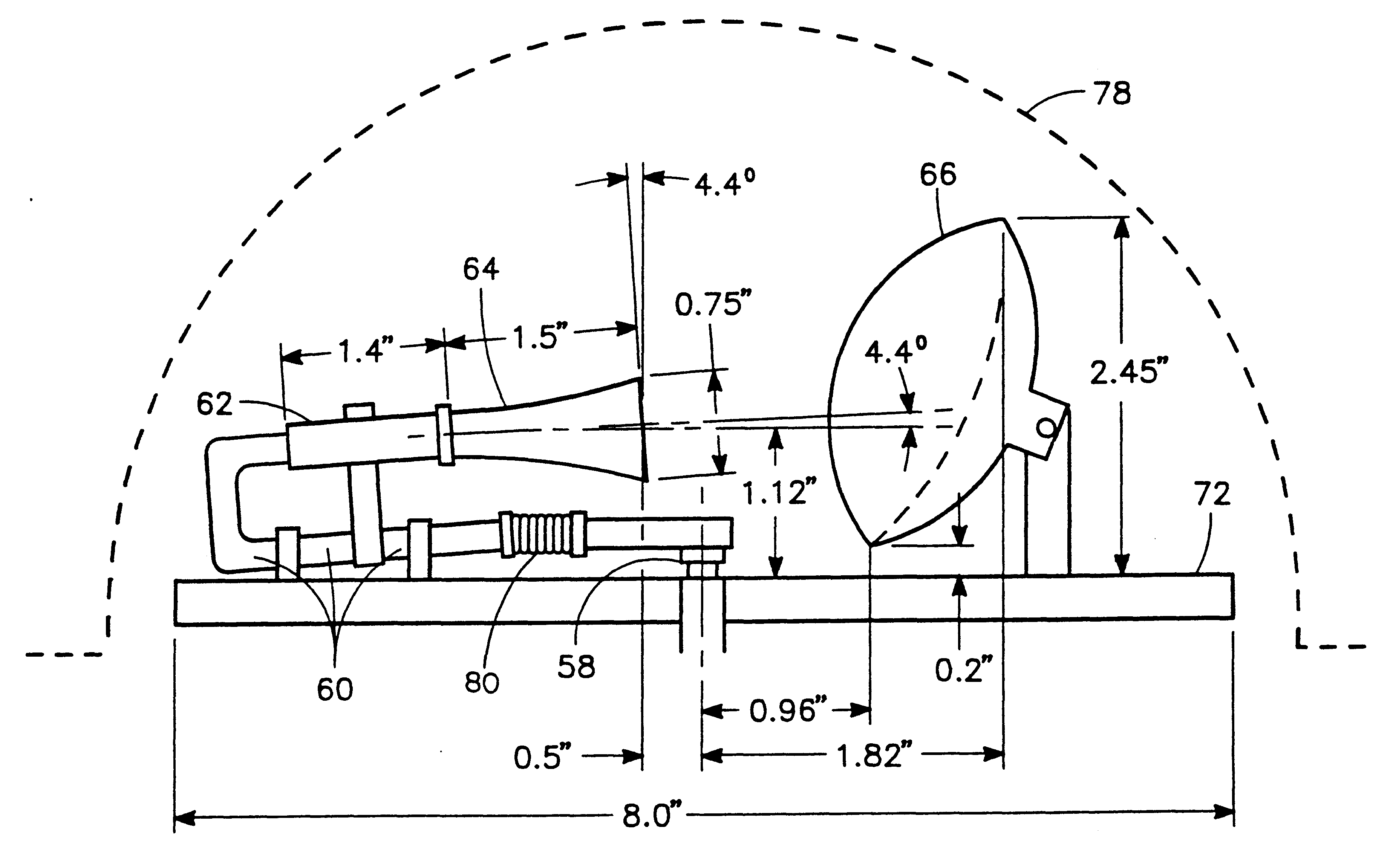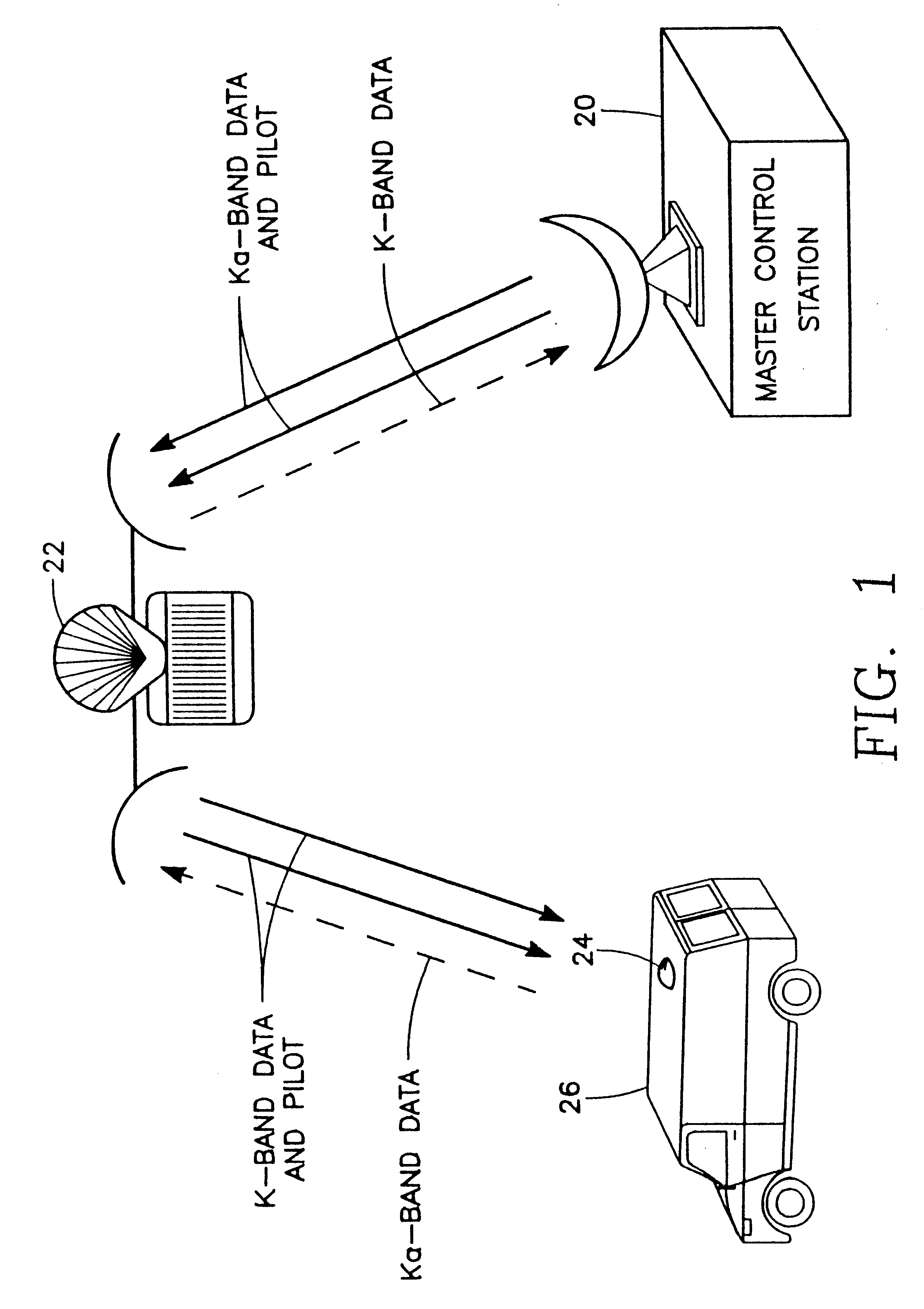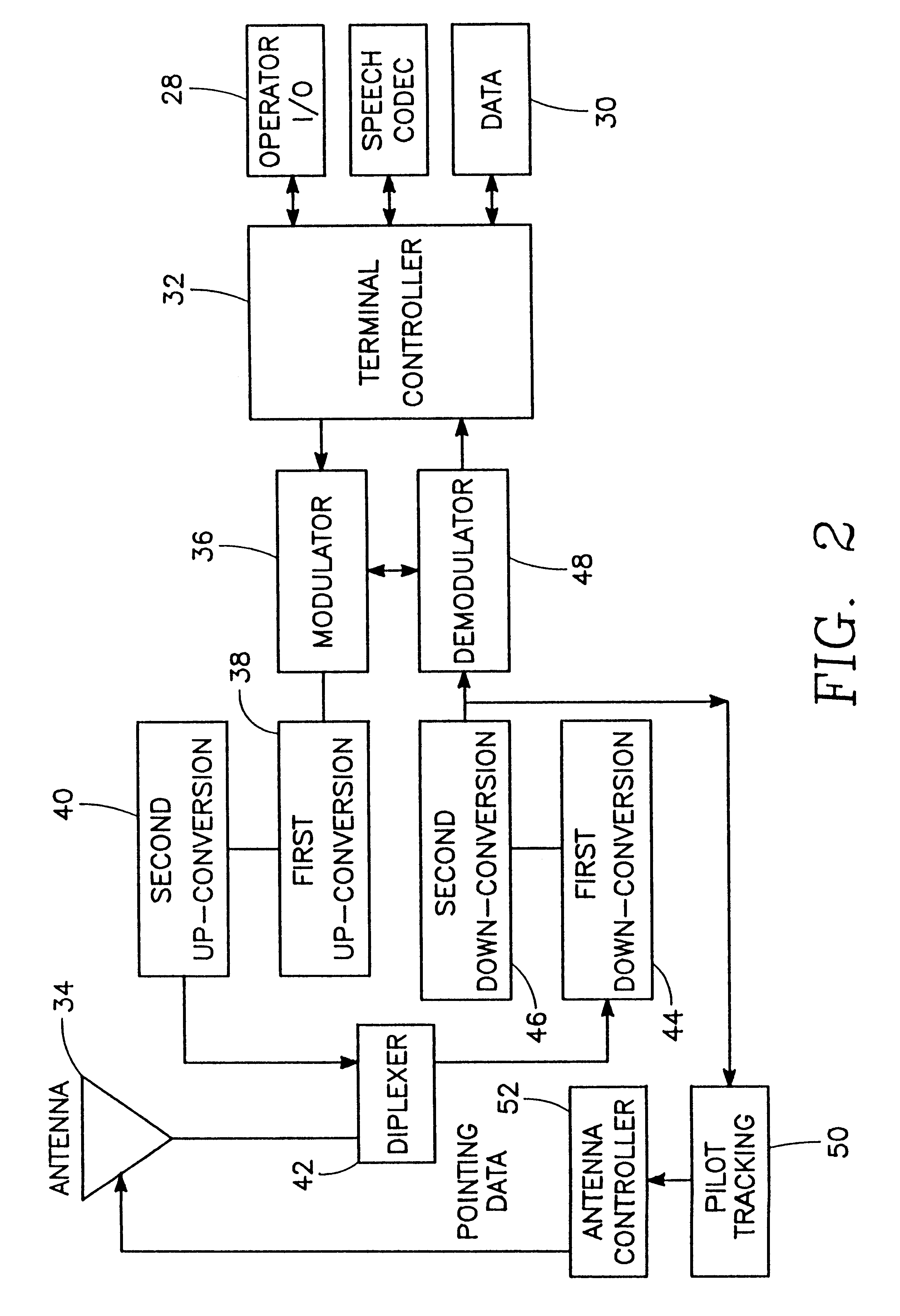Satellite-tracking millimeter-wave reflector antenna system for mobile satellite-tracking
a technology of reflector antenna and satellite tracking, which is applied in the direction of antenna details, antenna adaptation in movable bodies, antennas, etc., can solve the problem that the sensors themselves provide no fine control of the azimuth direction of the antenna
- Summary
- Abstract
- Description
- Claims
- Application Information
AI Technical Summary
Benefits of technology
Problems solved by technology
Method used
Image
Examples
Embodiment Construction
Referring to FIG. 1, a ground master control station 20 transmits Ka-band data to a geostationary satellite 22 and receives K-band data from the satellite 22. The satellite 22 converts the Ka-band data received from the ground station 20 to K-band data and transmits it to a compact satellite-tracking mobile vehicle antenna 24 of the present invention mounted on a ground vehicle 26. The Ka-band data transmitted by the master ground station 20 includes a pilot signal, so that the converted K-band data transmitted by the satellite 22 also includes a corresponding pilot signal received by the satellite-tracking mobile vehicle antenna 24. Furthermore, the mobile vehicle antenna 24 transmits Ka-band data to the satellite 22 which is converted to K-band data by the satellite 22 and transmitted to the master ground control station 20.
Referring to FIG. 2, the satellite-tracking mobile vehicle antenna 24 comprises a system including an operator input / output terminal 28, a data port 30, a term...
PUM
 Login to View More
Login to View More Abstract
Description
Claims
Application Information
 Login to View More
Login to View More - R&D
- Intellectual Property
- Life Sciences
- Materials
- Tech Scout
- Unparalleled Data Quality
- Higher Quality Content
- 60% Fewer Hallucinations
Browse by: Latest US Patents, China's latest patents, Technical Efficacy Thesaurus, Application Domain, Technology Topic, Popular Technical Reports.
© 2025 PatSnap. All rights reserved.Legal|Privacy policy|Modern Slavery Act Transparency Statement|Sitemap|About US| Contact US: help@patsnap.com



